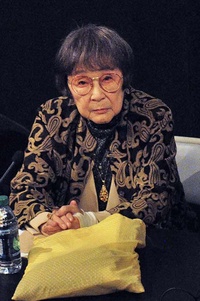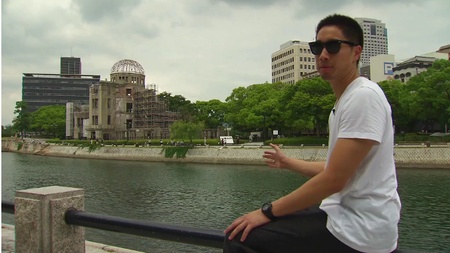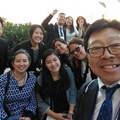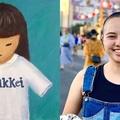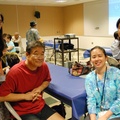Steve Nguyen is the director/producer of the animated film, HIBAKUSHA which re-creates the real-life experiences of Kaz Suyeishi, a survivor of the atomic bombing of Hiroshima. Since the release of the film, he has produced a short documentary that he filmed with the nonprofit campaign Global Zero of his visit to the city of Hiroshima. We recently asked him some questions about the projects.
What about Kaz’s story inspired you to first make the animated film, and then to visit Hiroshima?
The focus on Kaz as a person was more important to me than her heritage or her ethnicity. She never really emphasized her stance on the Japanese side or the American side of the war, and I thought her story would make an impact if we could do something to show what she went through firsthand. I wanted to do something that celebrated and highlighted the struggle that Hiroshima faced and then had the courage and compassion to rebuild from. It’s a beacon that shines to our society to help our fellow man and keep continuing to improve our society everyday.
Going to Hiroshima was always the next step in the process after the film was completed. Global Zero was very supportive in our efforts to document what we experienced when we arrived, and it was incredibly surreal and emotional for me. I did my best to absorb as much as I could.
How has the film been received? What was the response to the film as it was shown at screenings?
When we visited Hiroshima to screen our animated film HIBAKUSHA to the volunteers and patrons, they received it very positively. Our HIROSHIMA REVISITED short documentary was a follow-up supplement to the animated film that we decided to upload to YouTube in association with the Global Zero campaign and it has been completely open to the public forum for discussion.
My take on the Nikkei response was that they are completely numbed by the experiences that the hibakusha have encountered. Their mentality is like, “Oh, it’s just a dead body,” and then they keep walking, whereas the broad spectrum of viewers haven’t been exposed to this subject matter before.
The one thing that we all have in common is that they will preserve and celebrate anything they find interesting about various cultures, good or bad. After Hiroshima, one person basically said, “We survived this, what can’t we survive?” I completely agree.
How is this story relevant more broadly to Asian Americans?
Not just Asian Americans, but the entire collective conscious reacts to controversial issues in a manner in which it wants to express itself creatively while sending a positive message to their respective audience.
Some of the best art results from when people are oppressed and in horrible situations, and I think that’s an idea that we can relate to on a broad scale.
How has this project changed your view of the world?
There is a social and political awakening happening in our world that wasn’t evident until the rise of social media. I’m excited to see what the future holds in the next ten years for Hiroshima and Japan, and it will be exciting to watch an ancient culture transition into a new phase of its history.
Watch HIROSHIMA REVISITED on YouTube >>
© 2013 Vicky Murakami-Tsuda


